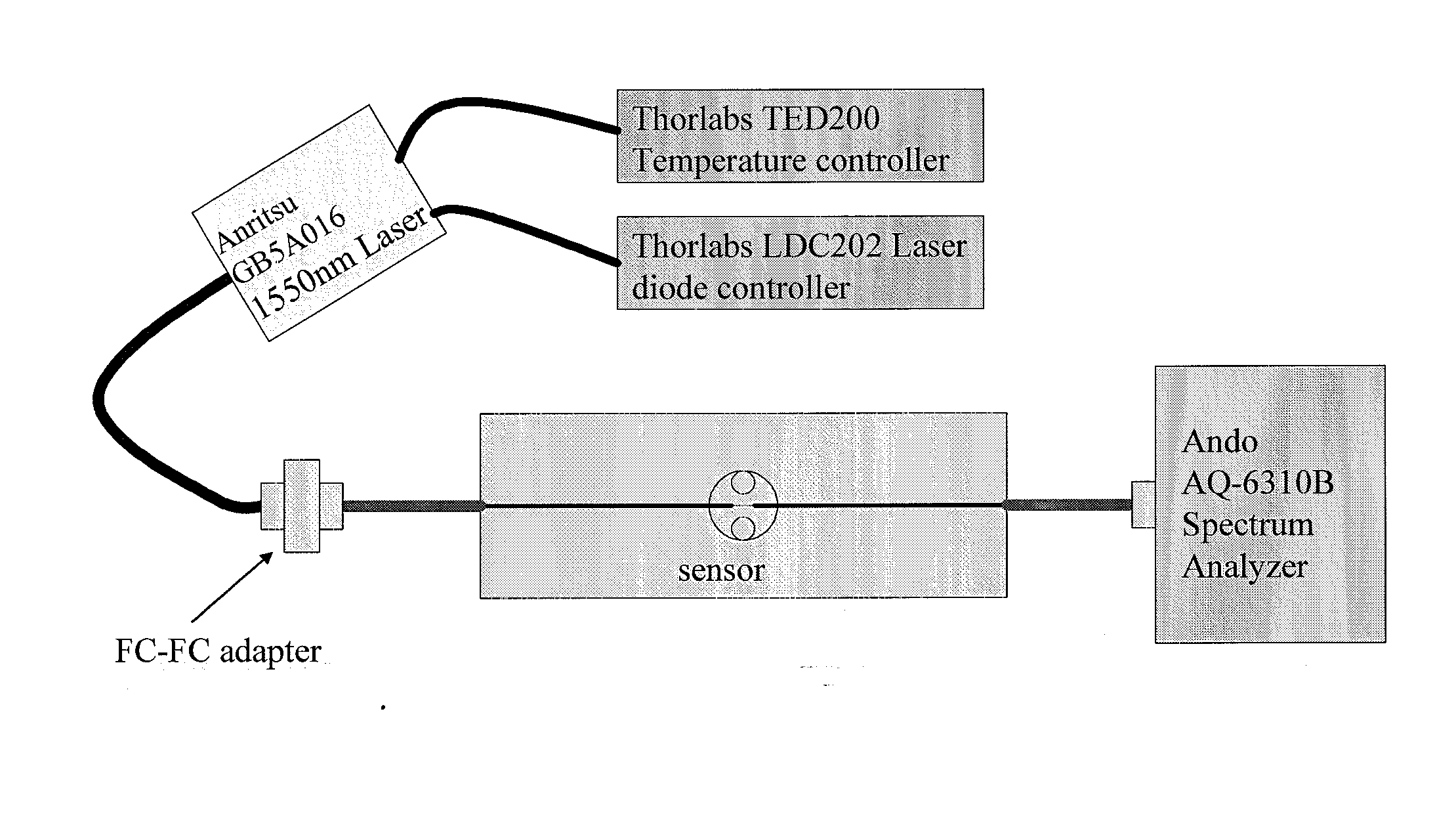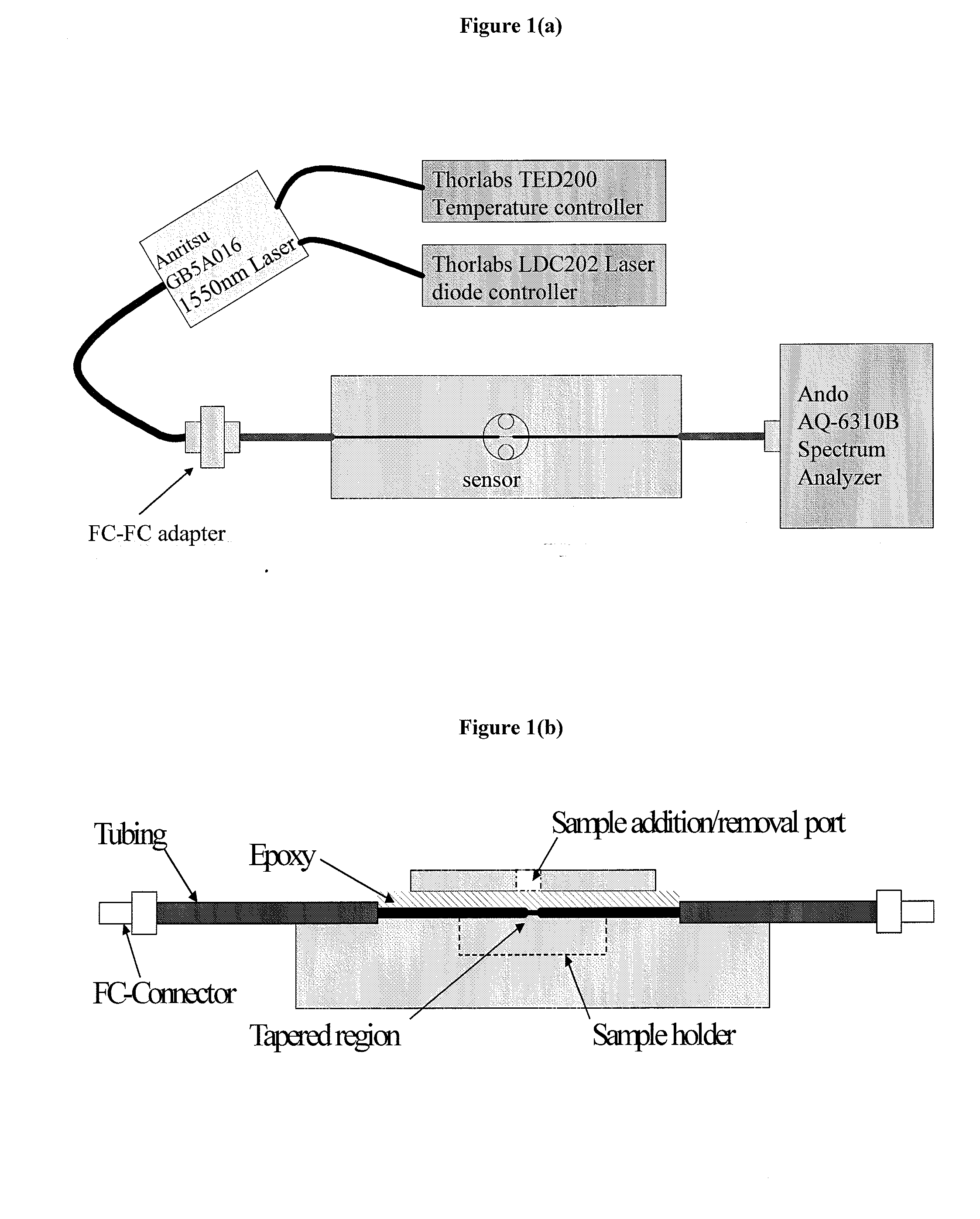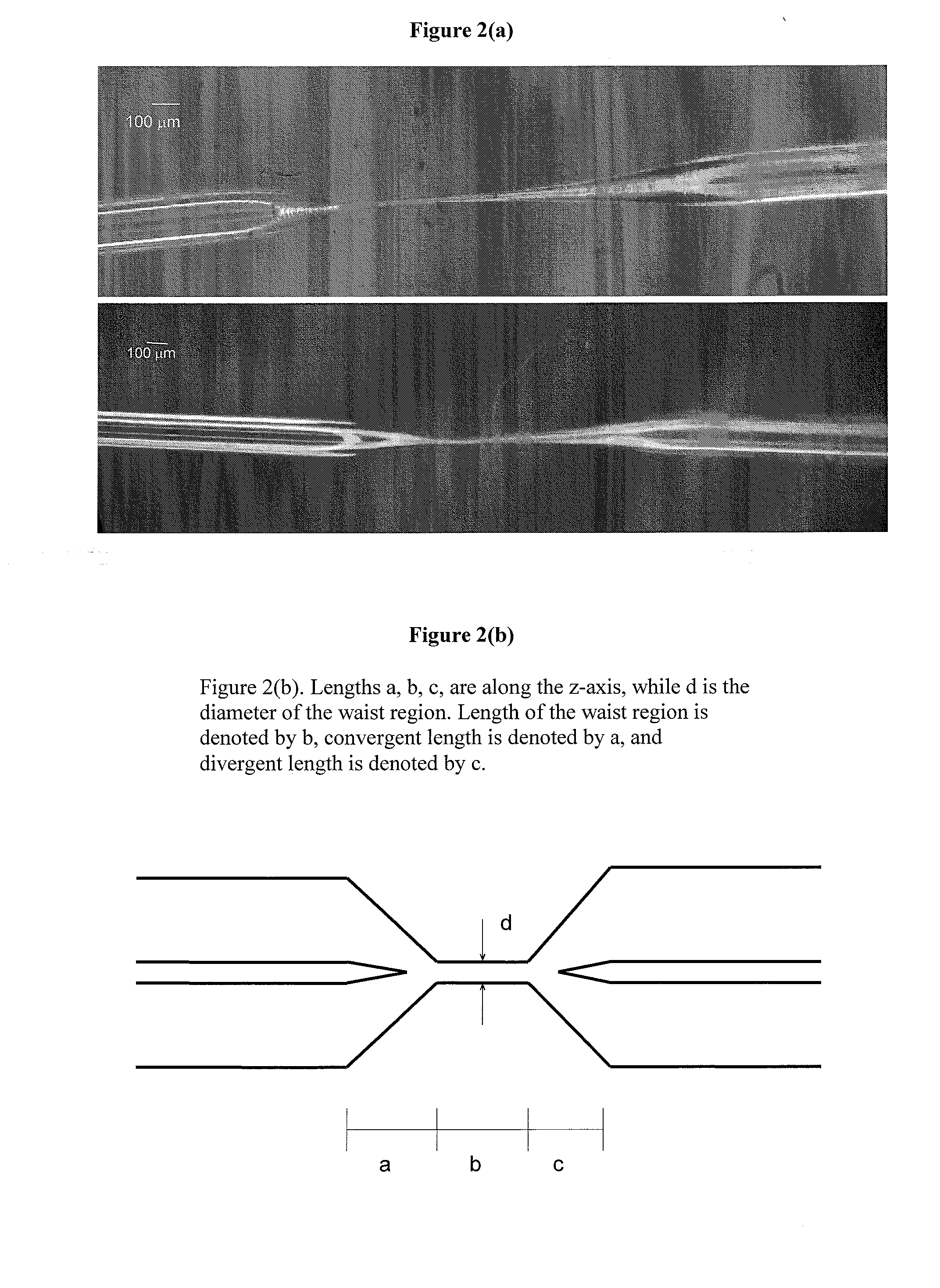Ultra Sensitive Tapered Fiber Optic Biosensor For Pathogens, Proteins, and DNA
a biosensor and ultra-sensitive technology, applied in the field of biconical continuous fiber optic tapered sensors, can solve the problems of insufficient quantification accuracy for low concentration measurements, methods that require laborious preparation steps and careful calibration, and slow and depend on sophisticated instruments, and achieve low sample volume, facilitate the ability of regenerative sensing, and low cost
- Summary
- Abstract
- Description
- Claims
- Application Information
AI Technical Summary
Benefits of technology
Problems solved by technology
Method used
Image
Examples
example 1
[0115]Evanescent field sensing of the pathogen E. coli 0157:H7 was achieved using tapered fibers at 470 nm. The surface of the tapered portion was immobilized with an antibody to E. coli 0157:H7 and was then successfully used to detect E. coli 0157:H7 at a concentration of 70 cells / mL. Similar experiments were conducted with Bovine Serum Albumin (BSA) using the same light source. Instead of using anti-E. coli 0157:H7, anti-BSA was used to modify the fiber surface. Similar to E. coli 0157:H7, it was found that the attachment of BSA resulted in a detectable change in transmission.
example 2
[0116]The absorption of BSA was measured in a cuvette using the same 1550 nm laser that was used in the taper detection measurements in the preferred embodiment. A single mode FC fiber was used to connect the laser diode to the input of the cuvette holder (Ocean Optics, FL). Another FC fiber was connected from the output end of the cuvette holder to the same spectrum analyzer as the one used in the preferred embodiment. Transmission characteristics of various BSA solutions, made by serial dilution in the concentration range of 10 pg / mL to 1 mg / mL, were measured. In a similar way absorption of antibody to BSA at a concentration of 500 μg / mL was also determined.
example 3
[0117]A BSA stock solution (1 mg / mL) was prepared in 10 mM phosphate buffered saline, pH 7.4 (PBS). Lower concentrations (1 μg / mL, 100 ng / mL, 10 ng / mL, 1 ng / mL, 100 pg / mL, 10 pg / mL, 1 pg / mL, 100 fg / mL) were prepared in PBS (pH 7.4) by serial dilution. 200 μL of each BSA sample were pipetted into the sample chamber in the fiber holder of the preferred embodiment for submerging the taper. After recording the transmission during the attachment of BSA to the optical fiber in the preferred embodiment, the sample was removed by pipetting. The fiber holder and the taper were rinsed several times with PBS, and the taper was then submerged with PBS buffer, adjusted to pH 2 by sulfuric acid, to measure antigen release response. The multiple-step detection was performed on fiber G with up to six different solutions of BSA, whose concentrations ranged from 100 fg / mL to 10 ng / mL. The BSA solutions were added in order from the lowest to the highest concentration. Data were recorded by for up to 4...
PUM
 Login to View More
Login to View More Abstract
Description
Claims
Application Information
 Login to View More
Login to View More - R&D
- Intellectual Property
- Life Sciences
- Materials
- Tech Scout
- Unparalleled Data Quality
- Higher Quality Content
- 60% Fewer Hallucinations
Browse by: Latest US Patents, China's latest patents, Technical Efficacy Thesaurus, Application Domain, Technology Topic, Popular Technical Reports.
© 2025 PatSnap. All rights reserved.Legal|Privacy policy|Modern Slavery Act Transparency Statement|Sitemap|About US| Contact US: help@patsnap.com



